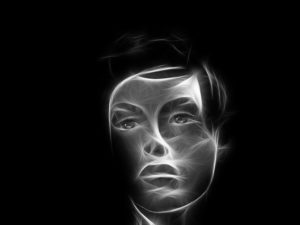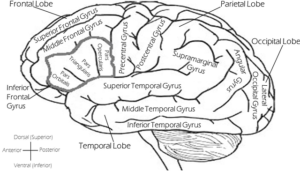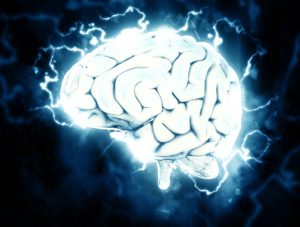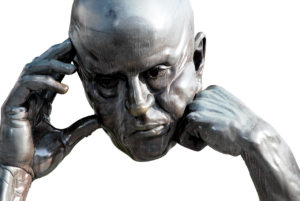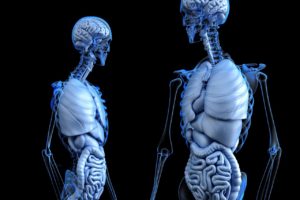Ear Anatomy [Show Notes]

Ear Basics
The auricle is the part of the ears you can see. It is made of cartilage (flexible tissue that doesn’t have a large blood supply). Everything else requires a tool for the doctor to see inside. And the doctor can only see to the ear drum. The stuff behind the ear drum isn’t visible because of the membrane that blocks it. The middle and inner ear are surrounded by your head bones.
Science of Sound
Sound is created when the air around us is compressed and then expands. They move away from the source in circles (think radar or sonar or throwing a pebble in a pond).
The ear canal directs the sound waves towards the ear drum.
Sound gets translated in 2 main ways
- Identify the sound
- Identify if the sound has meaning
Inside Your Ears
The ear drum (tympanic membrane) vibrates according to the intensity of the sound and trigger the Hammer-Anvil-Stirrup cascade.
- The ear drum vibrates the handle of the Hammer (Malus bone – yes, it’s a real bone).
- The Hammer bangs on the Anvil (Incus bone).
- The Anvil has a tail that is connected to the Stirrup (Stapes bone).
- The Stirrup looks like the spurs on the back of boots. It is connected to a membrane on the Cochlea and works like a plunger.
All of these bones are surrounded by air and the pressure is controlled by the Eustachian tube. This is the access point for ear infections or congestion due to allergies or a cold.
The Cochlea is a bone full of fluid and lined with hairs and shaped like a spiraled sea shell. The hairs pick up different frequencies of sound (sound wave frequency determines pitch). If certain levels of hairs get damaged, then you will not be able to hear pitches in that range anymore. If you unrolled the cochlea, it would be laid out low pitch to high pitch like a piano. And these hairs are connected to the auditory nerves and turn sound signals into electrical signal to send it to your brain.
Semicircular canals of the cochlea are little bone chambers full of fluid and they control balance. This works like a leveling bubble to help you stay upright. If it becomes dysfunctional, then it may trigger vertigo.
The middle ear (the area behind the ear drum) is where most of the trouble happens – whether allergies causing stopped up ears, or colds leading to ear infections.
Connect with me
Support us on Patreon
*NEW* Join the Pharmacist Answers Podcast Community on Facebook
Subscribe: iTunes, Stitcher, GooglePlay, TuneIn Radio
Music Credits: “Radio Martini” Kevin MacLeod (incompetech.com) Licensed under Creative Commons: By Attribution 3.0 http://creativecommons.org/licenses/by/3.0/



